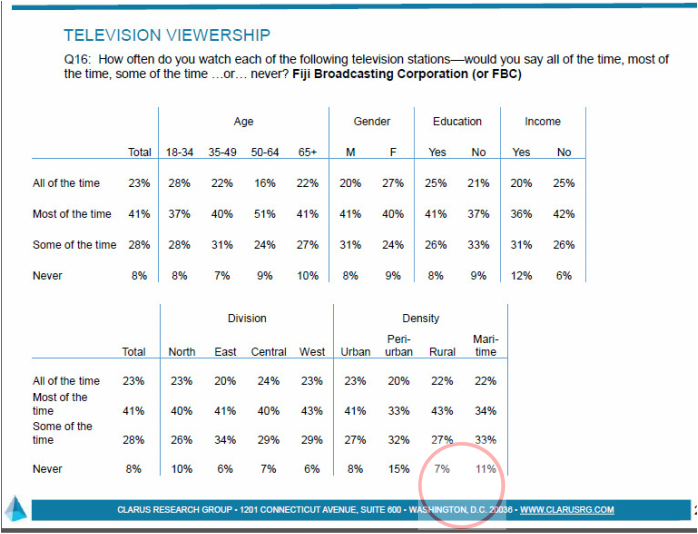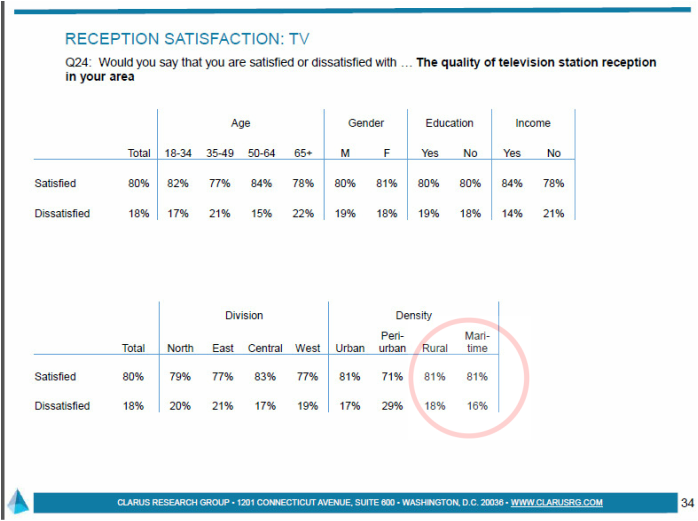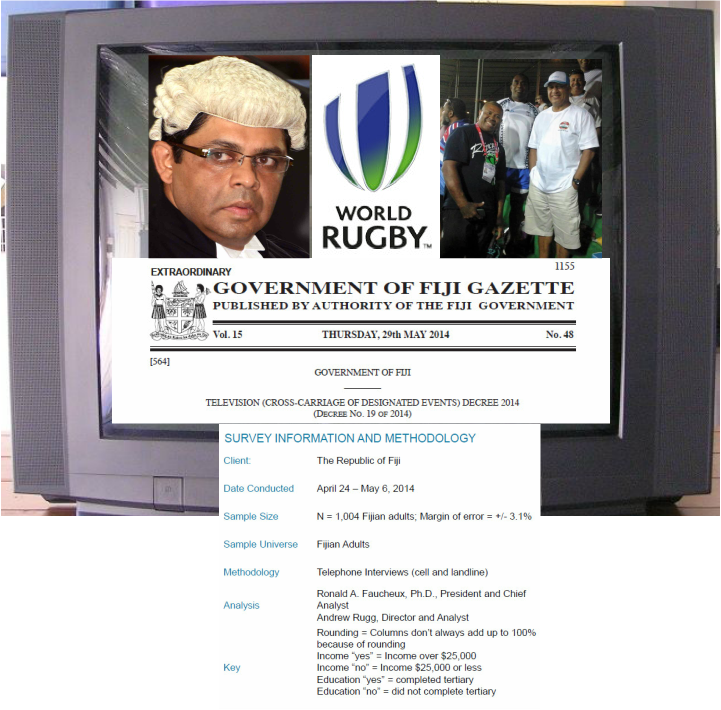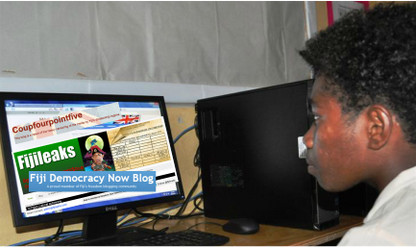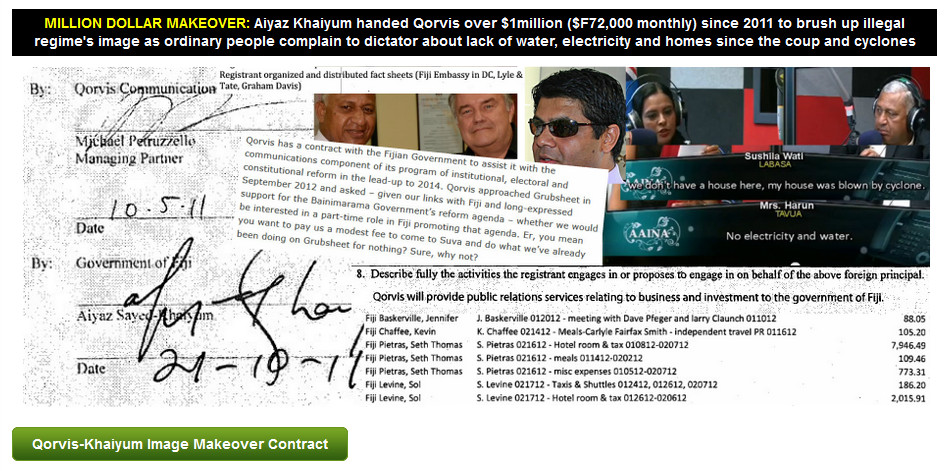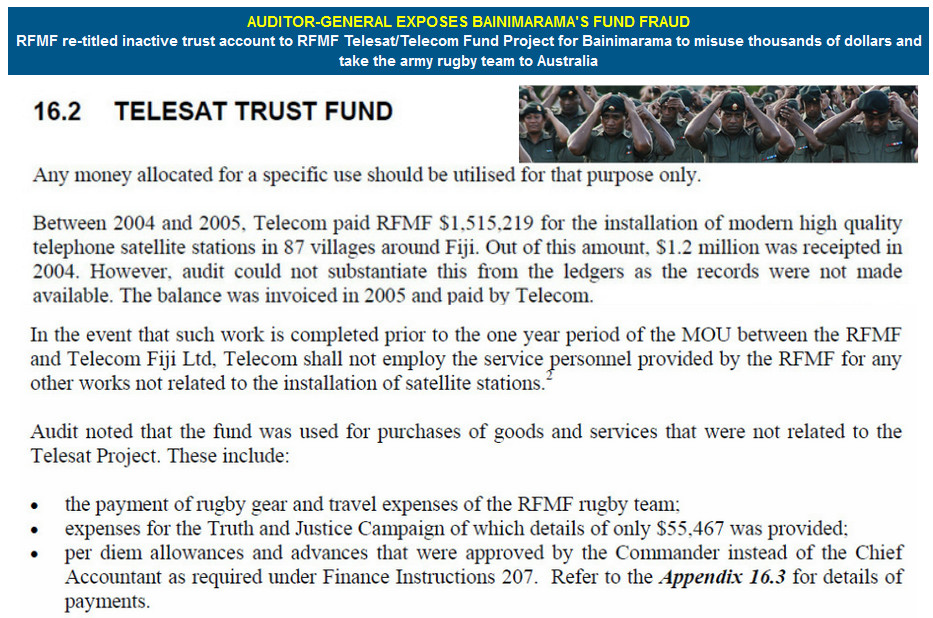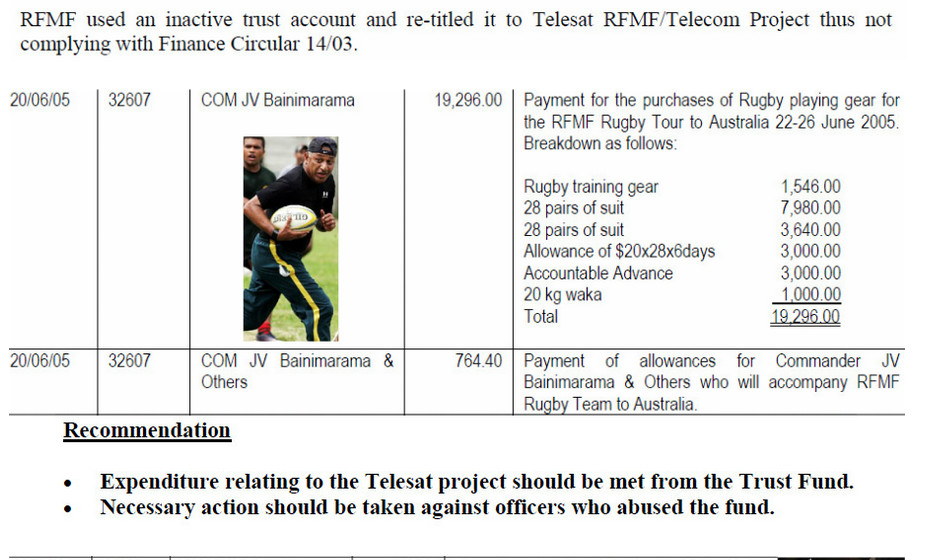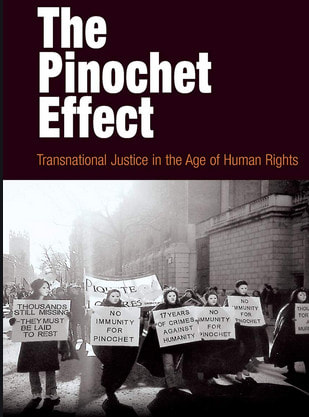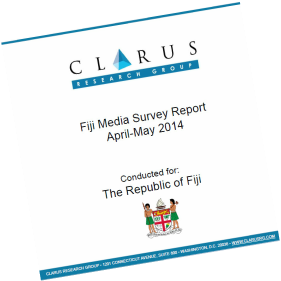
Fijileaks Investigation Team
A COPY of the Qorvis research document (prepared by their in-house polling company Clarus) is at the heart of the standoff between the Sayed-Khaiyum brothers and World Rugby/IRB over television coverage of the World 7s Series – and which again sees rugby fans starring at blank TV screens for a second weekend.
The Qorvis document is the crucial piece of misdirection that the Attorney-General Khaiyum has relied on to divert attention from a straight-forward commercial broadcast rights land-grab. The purpose of this brazen land-grab, titled the Television (Cross-Carriage of Designated Events) Decree is to disadvantage the already enfeebled Fiji TV, with less than 3 weeks of its current 6-month license remaining, while propping up the heavily-indebted FBC TV station run in profligate fashion by brother Riyaz.
But to achieve this, Aiyaz Khaiyum needed some kind of justification. So he reached out to the favourite political advisory and lobbying firm of repressive regimes around the world, Qorvis, who duly obliged.
According to the Qorvis document more than one thousand adults were polled by telephone and mobile over a two-week period in April and May, and the results tabulated and analysed by a Qorvis/Clarus research team headed by Dr Ron Faucheux, one-time MD of Qorvis, now a full partner in the company. Faucheux’s biography says ‘he is a recognized expert in using polling and research for strategy and message development’.
[It’s not clear who did the polling – an individual or entity in Fiji, a team from Qorvis/Clarus from Washington, or a third party in another country. Or what language was used for the questions. Or how the telephone and mobile numbers were sourced.]
The key to Khaiyum’s aggressive position with World Rugby – remarkably helpful to the government broadcaster FBC – is that the Qorvis research company produced a set of results showing that FBC TV had the larger audience share.
The audience share between FBC TV and Fiji One that has been repeatedly referenced within local media and in communication with World Rugby/IRB is FBC TV on 50 percent, Fiji TV on 43 percent (and Mai TV on 7 percent).
First lie – nowhere in the Clarus document is the 50: 43 percent split between FBC TV and Fiji TV’s audience share presented as a finding of the survey. There is not a single reference to, or conclusion drawn by Clarus in the document that reflects Khaiyum's assertion that the audience share between the two stations is 50:43.
But anyway, audience share means nothing in the context of live TV sport (acknowledged by the survey as the most popular programming of all). Audiences switch channels to whichever station is showing the live sport, which is why live sport is known amongst broadcasters as so-called ‘killer’ content. [Especially in Fiji where the spirit of doing whatever it takes to get where the TV signal is, in order to see the Fiji rugby team play, was referred to by letter writer Donald Pickering in the Fiji Times on December 10 – ‘MAYBE the Attorney-General has never heard the legendary stories about generators being carried to the top of mountains so that remote villagers could watch the Hong Kong Sevens.’]
But Khaiyum's usual smoke-and-mirrors and frequent references to Qorvis/Clarus being an ‘internationally-respected survey research firm’ allowed Khaiyum to present the issue as being about giving access to those who might be stuck with Fiji TV only.
Or as he told FBC News on December 3: ‘There are many people for example in Naitasiri and Wainibokasi, who do not catch (the) Fiji TV signal.’ What the AG is talking about is audience reach, the technical ability of a broadcast signal to reach its audience.
Second lie – the Clarus survey does not measure audience reach of any particular TV station and certainly does not indicate that FBC TV’s reach is stronger – quite the opposite, in fact, because of ….
Third and Biggest Lie – which you only find if you drill into the small print on page 26 and 27 of the 36-page document.
The Clarus survey broke down the geographic spread of the 1000+ respondents into the four administrative divisions (North, East, Central, West) and also four population density groups (Urban, Peri Urban, Rural and Maritime).
If Khaiyum’s aggressive message to World Rugby/IRB is to be believed then FBC TV should be easily the most popular TV station in the Rural and Maritime groups (‘Naitasiri and Wainibokasi …’).
In fact, the survey completely undermines Khaiyum's bold claims for his brother’s TV station: 7 percent of Rural communities and 11 percent of Maritime said they ‘Never’ watched FBC TV (i.e. can’t watch or won’t watch) versus 6 percent and 13 respectively for Fiji TV.
Given that the survey acknowledged a sampling error of +/- 3 percent, Clarus could show no statistical difference whatsoever between the two stations’ popularity in the remotest areas of the country, whose rugby fans the Khaiyum brothers say they are waging war on behalf of. In fact – given that the sampling error may ‘over-state’ FBC TV’s popularity in the Rural and Maritime – there is the possibility that in these remote areas Fiji TV has both the more popular and better technical service.
As letter writer Pickering concluded to the Fiji Times: ‘If we don't get to watch the Dubai or Port Elizabeth Sevens because of some decree, then all I can say is, "lucky the elections were not held next week"’.
Fijileaks Editor: http://www.fijileaks.com/home/despite-being-shown-the-red-card-and-match-blackout-the-khaiyum-brothers-continue-to-assert-they-are-right-and-no-mention-of-polling-company-clarus-research-link-to-qorvis
